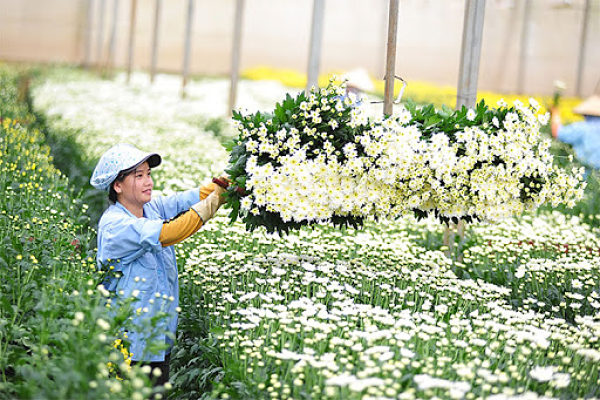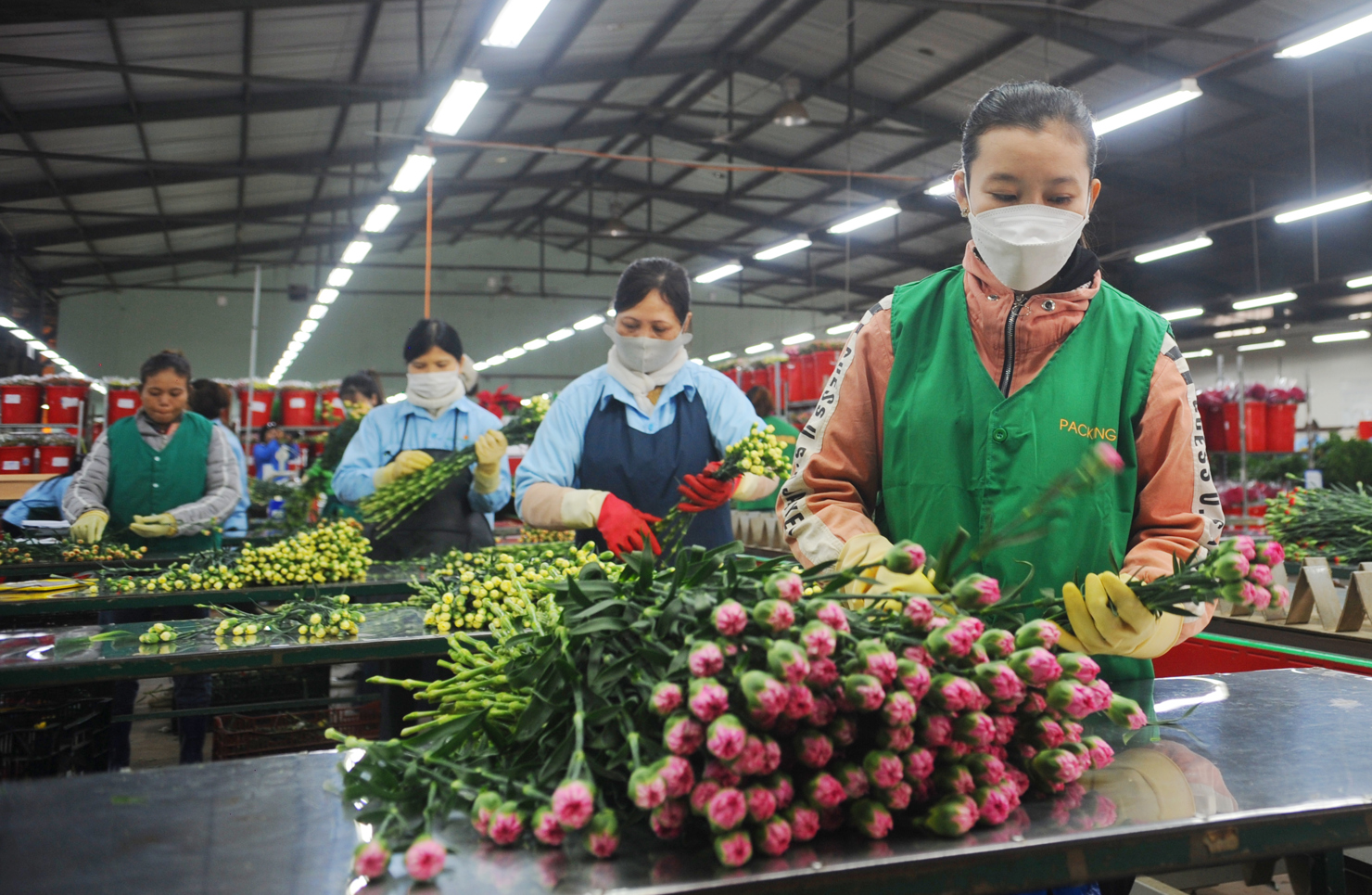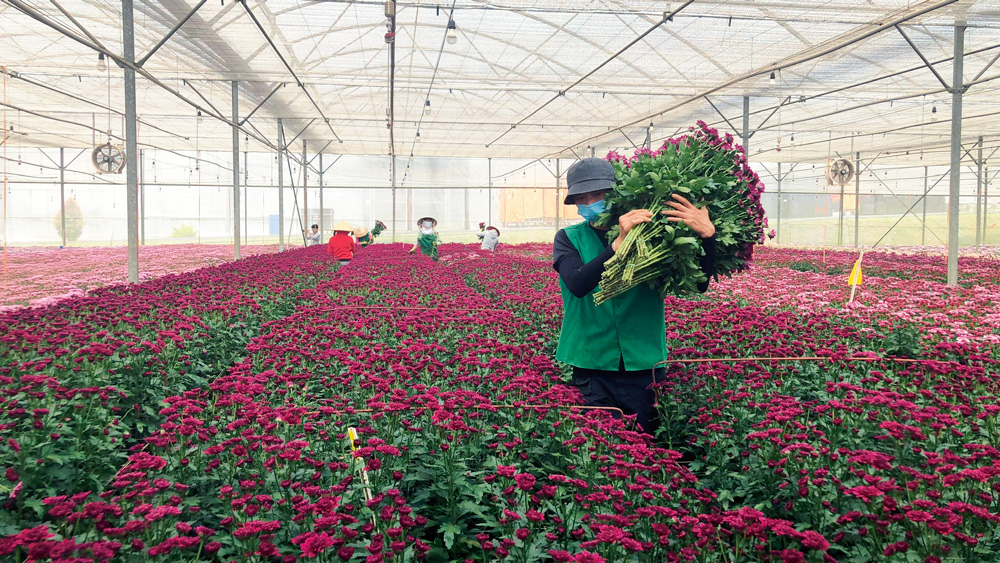“The value of harvest from flower and ornamental tree production in 2023 is estimated to reach 45 trillion VND. Flower exports have been experiencing strong growth in recent years: in 2020, reaching 48.7 million USD; in 2021, reaching 61.8 million USD; in 2022, reaching 67 million USD; and in 2023, estimated to reach approximately 80 million USD, a growth of 19.4% compared to 2022.”

“At the 2023 flower and ornamental plant industry conference, proposals were made for implementing a development program for flowers and ornamental plants until 2030,” stated Dr. Nguyen Huu Van, Chairman of the Vietnam Ornamental Creatures Association. He mentioned that ornamental creatures are one of the seven agricultural sectors explicitly mentioned in several decisions of the Prime Minister and the Ministry of Agriculture and Rural Development. Currently, many localities have established flower and ornamental plant production villages, with ornamental creatures integrated into community tourism, One Commune One Product (OCOP) products, and new rural development initiatives.”
Flower export reaches 80M USD
Associate Professor Dr. Dang Van Dong, Deputy Director of the Institute of Fruit and Vegetable Research, stated that by the end of 2023, the total area of flower cultivation nationwide is estimated to reach 36,000 hectares, an increase of nearly 2,000 hectares compared to 2022. The most produced flower species include orchids, roses, chrysanthemums, marigolds, and lotus flowers, with cultivation areas primarily concentrated in provinces in the Red River Delta, Central Highlands, and Mekong Delta regions.

In 2023, the value of production and consumption of flowers and ornamental plants in our country is estimated to reach 45 trillion VND; with an average income per hectare of cultivation at 350 million VND/year.
Flower exports have been experiencing strong growth in recent years. According to statistics from the General Department of Customs, Vietnam’s flower exports reached 61.8 million USD in 2021, increasing by 27% compared to 2020. Among them, rose exports experienced the strongest growth, exceeding 100%. Following roses are lilies, chrysanthemums, and orchids. Flower exports in 2022 reached 67 million USD, with a growth rate of 6.7%. It is estimated that flower exports in 2023 will reach approximately 80 million USD, representing a growth rate of 19.4% compared to 2022.
According to statistics from the Hanoi Department of Agriculture and Rural Development, the entire city has established 47 flower production zones (with a total area of over 1,800 hectares), ranging in scale from 10 to 20 hectares per zone, located in districts and towns such as Bac Tu Liem, Tay Ho, Me Linh, Dan Phuong, Thuong Tin, and Gia Lam. High-quality flower cultivation areas account for over 30% of the total and are being expanded this year. Many types of flowers such as chrysanthemums, lilies, and orchids have been exported (according Cam Floral House).
The leadership of the Hanoi Department of Agriculture and Rural Development stated that the goal from now until 2025 is to expand the area of flower and ornamental plant cultivation to 8,000 hectares, focusing on districts such as Me Linh, Dan Phuong, Phuc Tho, and Gia Lam. This includes flower and ornamental plant cultivation zones that apply high technology, with a scale ranging from 20 to 50 hectares per zone. In order to achieve export targets, the agriculture sector in Hanoi has conducted surveys and research on some flower varieties with export strengths in Me Linh district to establish cultivation zone codes promptly.
Development of high-tech flower cultivation

According to the Department of Agriculture and Rural Development of Lam Dong province, the flower cultivation area in this province currently reaches nearly 10,000 hectares. There are over 400 species of flowers in the province with thousands of flower varieties that have been long-standing in Da Lat or originated from Asia, Europe, America, Africa, and Australia.
Up to now, over 3,000 hectares of flower cultivation land in Lam Dong meet the criteria of applying high technology in agriculture. Currently, Lam Dong has 3 flower production enterprises recognized as high-tech agricultural enterprises, including Dalat Hasfarm Company, Sunflower Horticulture Company Limited, and Biotechnology Technology Company Limited.
Lam Dong province has been vigorously promoting the development of flowers towards smart agriculture, applying automatic control technology, and accurate information systems in flower production. Producers establish data on electronic software to automatically control flower care based on climate, environmental, and nutritional factors.
Through sensor systems, operators obtain the most accurate information about production conditions (pH, humidity, temperature, nutrients) to monitor and control irrigation, fertilization, shading nets, and greenhouse roof opening. These technologies help optimize flower growth, promote high productivity and quality. Especially, they reduce the amount of plant protection chemicals, fertilizers in flower cultivation, and decrease labor for enterprises and cooperatives.
On the national scale of flower cultivation, Associate Professor Dr. Dang Van Dong shared that currently, over 19% of enterprises, cooperatives, farms, or households apply advanced techniques to flower production at different levels. These techniques include indoor cultivation under shade, hydroponic cultivation (without soil), water-saving irrigation through automatic drip systems or automatic sprinklers, and flower seed production using plant tissue culture methods. Particularly, some establishments have adopted digital technology, artificial intelligence (AI), Internet of Things (IoT), or transparent information sharing in the business network (Blockchain) in flower production.
Associate Professor Dr. Dang Van Dong also candidly assessed that flower and ornamental plant production in our country is still primarily spontaneous and fragmented. Many localities have not paid attention to flower and ornamental plant development planning; there is still a lack of connection between production and consumption; cultivation techniques and post-harvest technologies are outdated compared to advanced flower-growing countries. Some flower-growing areas still use a considerable amount of plant protection chemicals, affecting the environment, ecology, and community health.
Vice Chairman of the Vietnam Gardening Association, Dr. Pham Minh Thong, believes that there is still ample room for exporting flower and ornamental plant products to international markets. However, besides fulfilling customs procedures, after circulation, it is also necessary to prove non-violation of breed copyrights in creating those products. Even a traditional flower or ornamental plant species imported into our country for domestic consumption needs can still face copyright infringement complaints.
“Even with traditional local flower and ornamental plant varieties, ownership rights can easily be lost right on ‘home turf’ because most localities have not paid attention to the dissemination of seed circulation, resulting in inevitable losses,” emphasized Dr. Thong.
Dr. Pham Minh Thong, Vice Chairman of the Vietnam Gardening Association, believes that flowers grown in Vietnam are increasingly favored by many countries, but the quality is not consistent. Therefore, to establish their own position and facilitate exports, gardeners and enterprises must transition from traditional agriculture production to applying high technology.
At the same time, it is necessary to vigorously build flower brands through domestic and international flower and ornamental plant exhibitions and fairs. In the future, flower exports should expand into Asian markets to leverage geographical advantages, low transportation costs, and ease of preservation. See more society news in Vietnam.